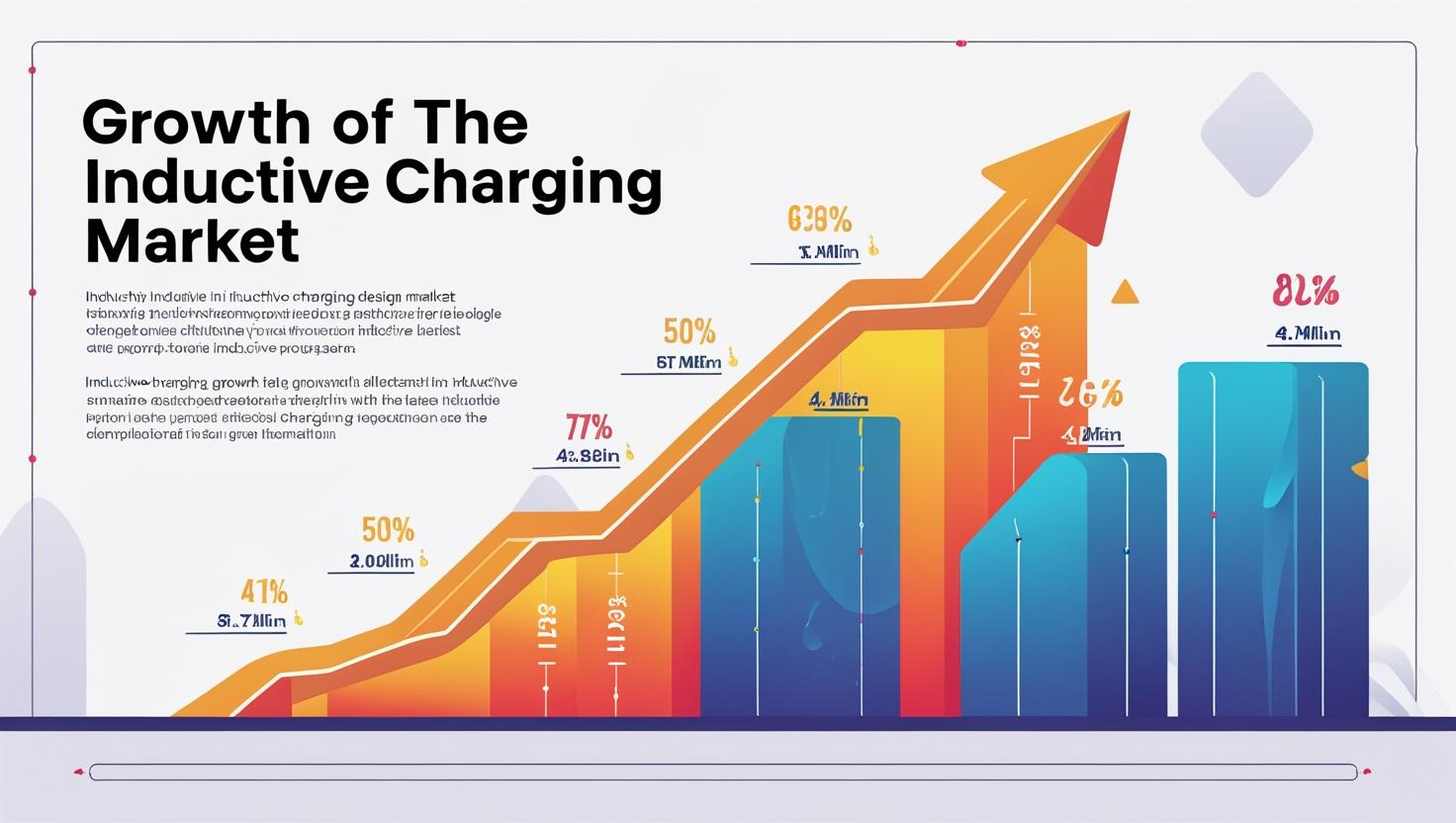The global shift toward wireless technologies is accelerating, and at the center of this evolution is the growing inductive charging market. As industries push for greater convenience, safety, and efficiency, inductive charging—a method that transfers power wirelessly through electromagnetic fields—is emerging as a preferred solution across multiple sectors. From electric vehicles (EVs) to consumer electronics and medical devices, the adoption of inductive charging is redefining how energy is transferred and consumed.
Understanding Inductive Charging
Inductive charging, also known as wireless or contactless charging, uses electromagnetic induction between two coils—a transmitter and a receiver—to deliver electrical energy without physical connectors. This technology is especially attractive in applications where durability, water resistance, or frequent charging cycles are critical. Its benefits include enhanced user convenience, reduced wear and tear, and the elimination of cumbersome cords and cables.
Electrifying the EV Sector
One of the most transformative applications of inductive charging is in the electric vehicle market. As global adoption of EVs accelerates, driven by climate goals and regulatory mandates, the need for convenient and efficient charging infrastructure has become a priority. Inductive charging allows EVs to recharge by simply parking over a charging pad—eliminating the need for plug-in cables and improving the overall user experience.
Automakers and infrastructure providers are increasingly investing in wireless charging systems for both private and public transportation. Dynamic inductive charging, which enables vehicles to charge while in motion over specially equipped roadways, is also being tested in pilot projects, promising to extend EV range and reduce downtime.
Consumer Electronics Go Cordless
Inductive charging is now a standard feature in many consumer electronics, particularly in smartphones, smartwatches, earbuds, and other personal gadgets. Consumers appreciate the convenience of dropping a device onto a pad without fumbling with cables. Major technology companies are also exploring advanced forms of wireless charging that work over short distances without direct contact.
Download PDF Brochure @ https://www.marketsandmarkets.com/pdfdownloadNew.asp?id=640

The demand for sleeker, water-resistant, and portable devices continues to grow, pushing manufacturers to innovate around inductive charging. Integration with furniture, vehicle consoles, and public spaces (such as cafés and airports) is becoming increasingly common, further enhancing its accessibility and appeal.
Healthcare and Medical Applications
The healthcare industry is also embracing inductive charging, particularly in implantable medical devices, wearables, and hospital equipment. For implantables like pacemakers and neurostimulators, wireless charging eliminates the need for invasive procedures to replace batteries. In hospital settings, medical tools that rely on inductive charging reduce infection risks by removing the need for exposed electrical connectors.
Additionally, wearable health monitors that require frequent recharging benefit from inductive systems that are more patient-friendly and reduce device downtime. As medical technology becomes more portable and personalized, the role of wireless charging in ensuring device uptime and hygiene is becoming indispensable.
Market Drivers and Trends
The wireless charging industry size is expected to reach USD 16.0 billion by 2029 from USD 6.4 billion in 2024, at a CAGR of 20.3% during 2024–2029 , Several factors are propelling the growth of the inductive charging market. Consumer demand for convenience, the electrification of transportation, and advances in power electronics and magnetic materials are all contributing to its expansion. Technological developments such as resonant inductive coupling, higher power transfer efficiency, and multi-device charging are further enhancing the capabilities and applications of this technology.
Moreover, growing awareness of environmental sustainability is encouraging the development of energy-efficient charging solutions, and inductive systems are evolving to meet these needs through smart energy management and integration with renewable sources.
As technology continues to push toward seamless, wireless, and user-centric experiences, inductive charging is positioned to play a key role in the global energy transition. Its growing adoption across EVs, consumer electronics, and healthcare not only reflects a desire for convenience but also supports broader goals of sustainability, safety, and system integration. With ongoing innovation and investment, the inductive charging market is on a strong upward trajectory—powering the future, wirelessly.
Semiconductor and Electronics Market Research Reports
Inductive Charging Market – FAQ
1. What is inductive charging?
Inductive charging is a wireless power transfer method that uses electromagnetic fields to transmit energy between two coils—a transmitter in the charging station and a receiver in the device. It allows devices to charge without physical connectors.
2. How does inductive charging work?
It works through the principle of electromagnetic induction. When alternating current passes through a coil in the charger, it creates a magnetic field. A nearby coil in the receiving device picks up this energy and converts it into electrical power to charge the battery.
3. What are the main applications of inductive charging today?
Inductive charging is widely used in electric vehicles (EVs), consumer electronics (like smartphones, smartwatches, and earbuds), and medical devices (such as implants and wearables). It’s also emerging in industrial and public infrastructure settings.
4. Why is inductive charging important for electric vehicles (EVs)?
It offers a more convenient and safer charging method for EVs, eliminating the need for plug-in cables. It can also enable dynamic charging, where vehicles charge while moving on equipped roads—extending range and reducing downtime.
5. How is inductive charging used in consumer electronics?
It is commonly found in smartphones, wireless earbuds, tablets, and smartwatches. Users can charge devices simply by placing them on a compatible charging pad—reducing wear and improving water resistance.
